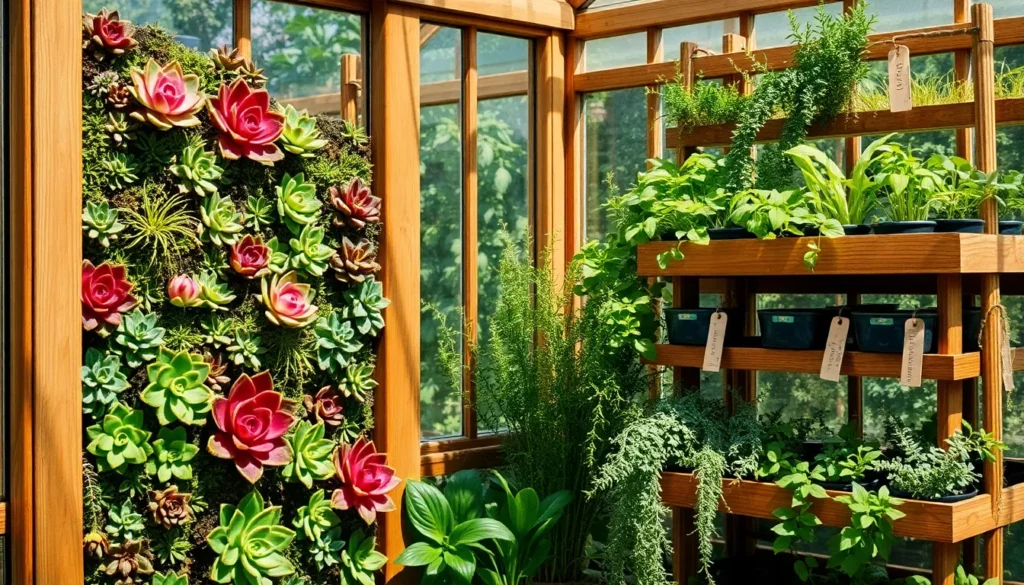Imagine stepping into your backyard, enveloped in a lush, thriving oasis that thrives year-round, regardless of the weather outside. A greenhouse can make this dream a reality, offering a controlled environment where both novice and seasoned gardeners can nurture their green thumbs. Whether you’re just starting your gardening journey or you’ve been trudging through soil for years, a backyard greenhouse opens up a world of possibilities to expand your plant repertoire and cultivate wonders right at home.
At its heart, greenhouse gardening is about more than just extending growing seasons or protecting plants from the elements—it’s about creating a personal sanctuary that reflects your passion and creativity. By embarking on these 12 essential greenhouse projects, you’ll learn how to maximize space, increase efficiency, and enhance the beauty of your garden haven. Our guide will walk you through a diverse array of projects, from innovative shelving solutions to installing effective ventilation systems, ensuring you have the tools and knowledge to bring your greenhouse to life.
Dive into this guide with an open mind, ready to transform your backyard into a botanical retreat that delights and inspires. Each project is designed to be approachable, with clear instructions that cater to varying skill levels, ensuring that everyone can benefit from the magic of greenhouse gardening. Together, we’ll explore the intricacies of greenhouse management, empowering you to create an environment where plants—and your gardening skills—can flourish.
Choosing a Greenhouse Design
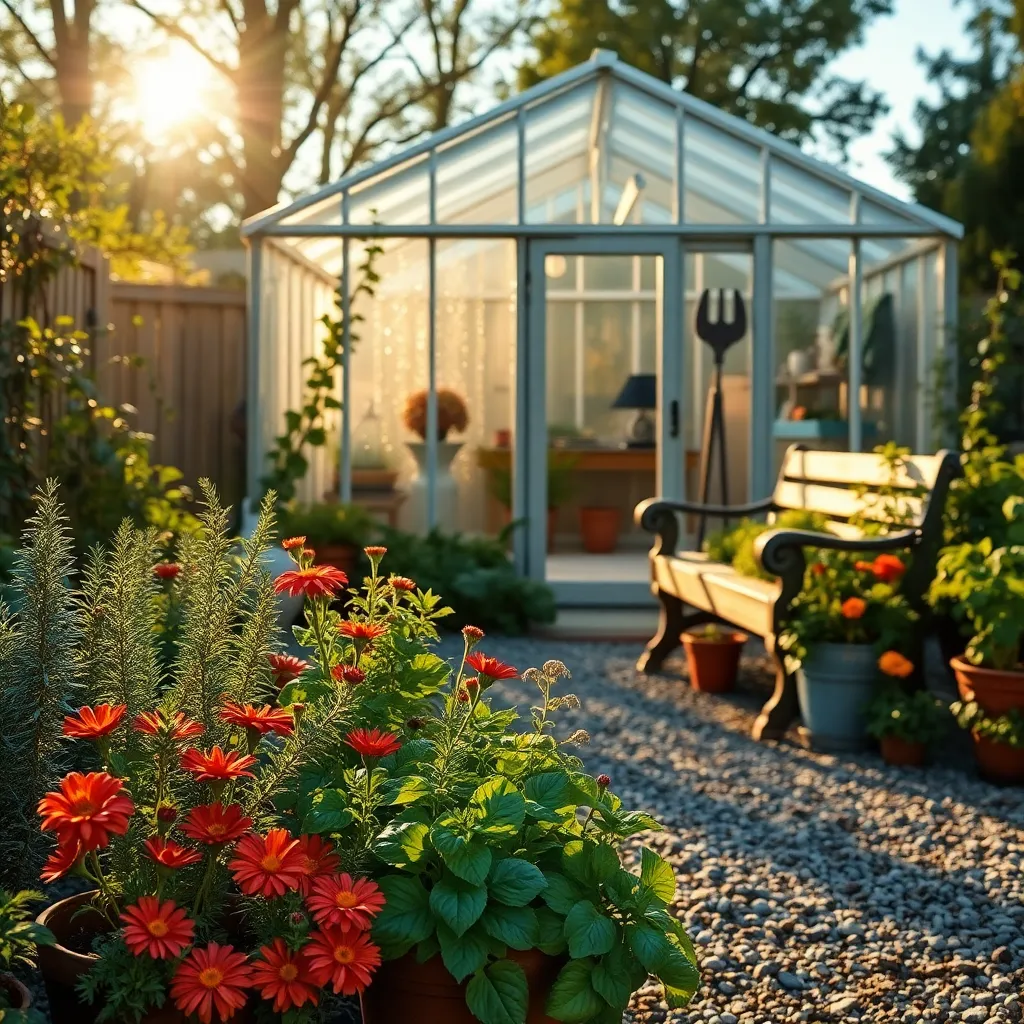
When choosing a greenhouse design, consider the space available in your backyard and the types of plants you plan to grow. For smaller spaces, a lean-to greenhouse might be ideal as it maximizes space efficiency while providing ample growing conditions.
It’s important to think about the materials used in the construction of your greenhouse. Polycarbonate panels are a popular choice for their durability and excellent insulation properties, which can help maintain a stable environment for your plants.
For those looking to extend their growing season, a freestanding greenhouse with proper ventilation is essential. Automatic vents and shading systems can help regulate temperature and prevent overheating during the summer months.
Advanced gardeners may want to explore designs that incorporate hydroponic systems. These setups can optimize space and water usage, allowing for more intensive cultivation of plants such as leafy greens and herbs.
Installing Proper Ventilation Systems
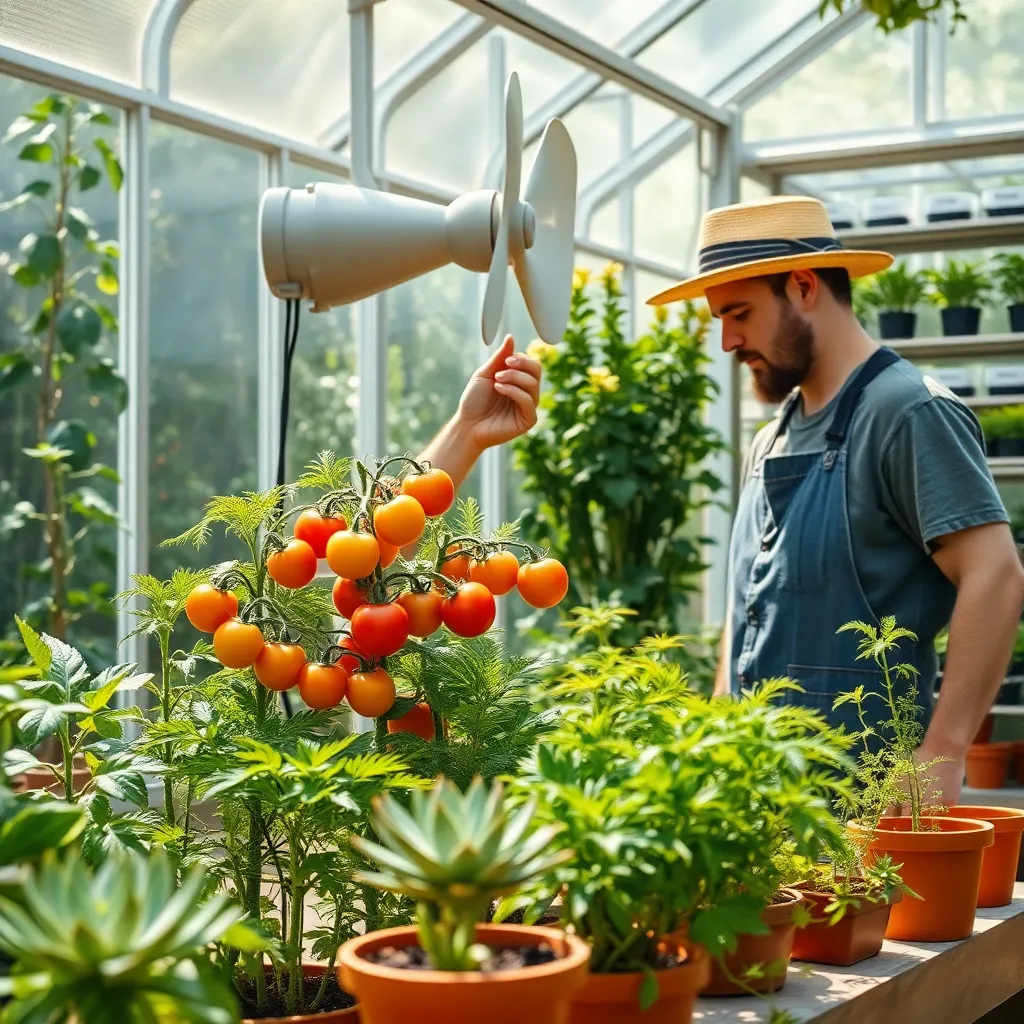
Proper ventilation is crucial for maintaining a healthy environment in your backyard greenhouse. It helps regulate temperature, control humidity, and reduce the risk of plant diseases, making it a key component of successful plant care.
To start, consider installing roof vents as they allow hot air to escape, ensuring a stable climate inside the greenhouse. If you’re new to greenhouse gardening, manual vents are a good starting point, as they are easy to install and operate.
For those looking to automate their greenhouse, automatic vent openers are an excellent investment. These devices open and close vents based on temperature changes, providing a consistent environment without constant supervision.
In addition to roof vents, side vents and fans can be utilized to enhance airflow and prevent heat buildup. Position fans to create a gentle breeze across your plants, which can help strengthen stems and keep pests at bay.
Efficient Heating Solutions
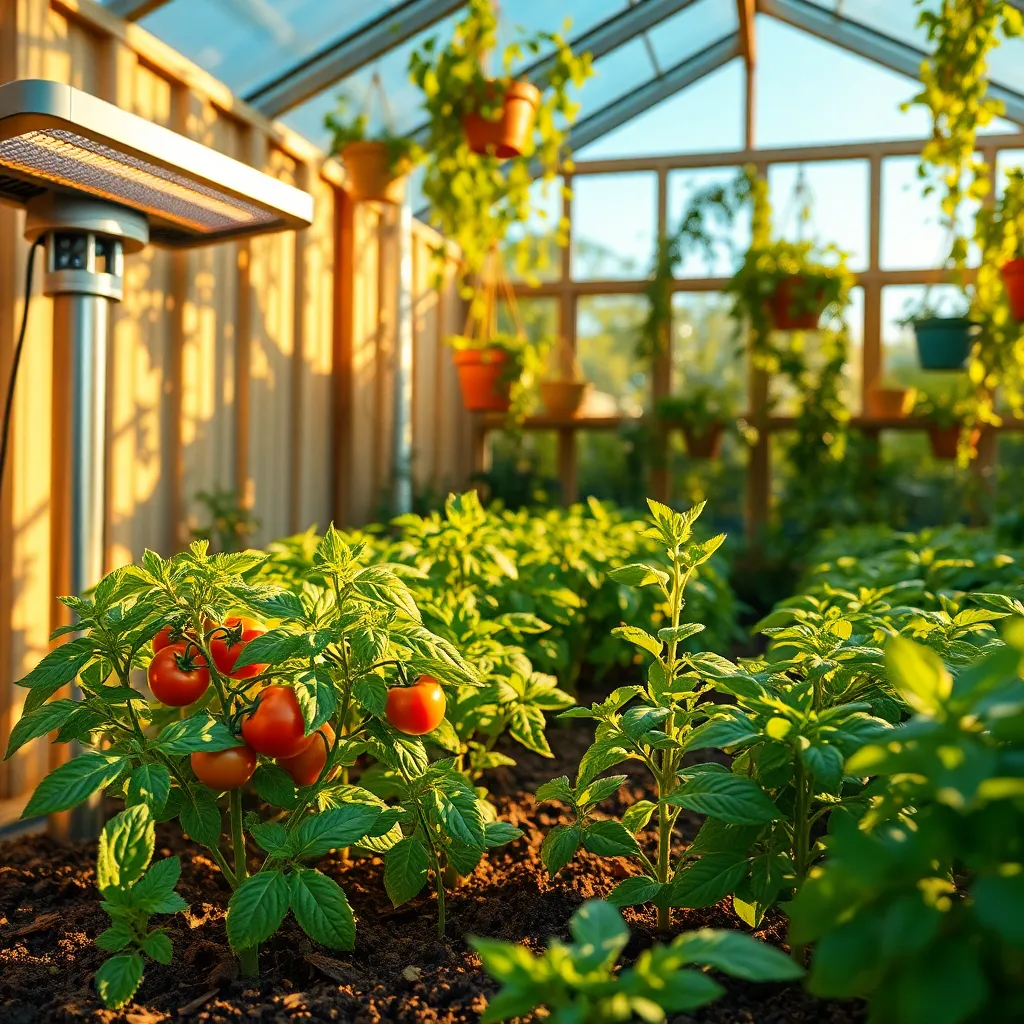
As you ensure proper ventilation in your greenhouse, it’s equally crucial to consider effective heating solutions to maintain optimal growing conditions. Winter months can pose a challenge, but with the right heating system, you can continue nurturing your plants successfully.
Electric heaters are a popular choice due to their ease of installation and consistent heat output. For a more sustainable option, consider installing a solar-powered heater, which harnesses energy from the sun to warm your greenhouse.
If you’re looking for a cost-effective solution, a propane heater may suit your needs, especially in regions with severe winters. Ensure proper ventilation when using propane heaters to prevent the buildup of harmful gases.
Incorporating thermal mass materials like water barrels can help retain heat naturally, creating a more stable environment for your plants. Position these materials in direct sunlight to maximize their heat absorption during the day, releasing warmth at night.
Automated Watering Systems
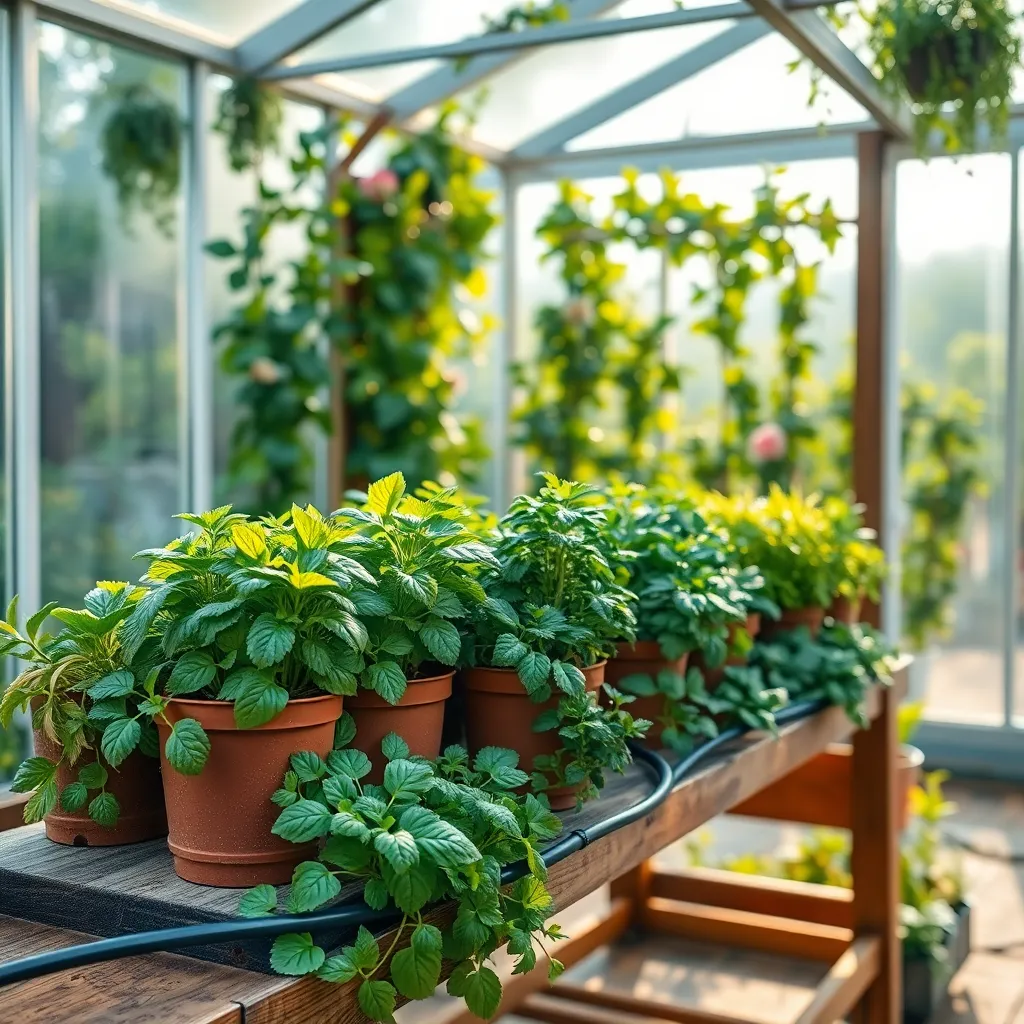
Automated watering systems can transform your greenhouse into a low-maintenance paradise. These systems ensure your plants receive the right amount of water consistently, which is crucial for healthy growth.
To get started, consider installing a drip irrigation system, which is both efficient and easy to manage. This system delivers water directly to the roots, reducing waste and promoting deep root growth.
For those with a larger greenhouse, a soaker hose might be a more suitable option. It allows for even water distribution across a wide area, ensuring all your plants are adequately hydrated.
Regularly check your automated system to ensure it’s functioning correctly and not overwatering or underwatering your plants. Adjust the settings seasonally, as plants often need more water during warmer months and less during cooler periods.
Optimal Lighting for Growth

Understanding the importance of lighting is crucial for thriving plants in your backyard greenhouse. Different plants have varying light needs, so observing and adjusting light conditions can significantly impact their growth.
For beginners, ensuring your plants receive at least 6 to 8 hours of sunlight is a good rule of thumb. If natural light is insufficient, consider installing grow lights to supplement your plants’ needs, especially during shorter winter days.
Advanced gardeners can experiment with light spectrums to optimize plant growth. LED grow lights with adjustable spectrums allow you to tailor the light to specific plant stages, fostering robust growth and flowering.
Placement of plants plays a critical role in meeting their light requirements. Position light-loving plants, like tomatoes and peppers, near south-facing windows or under direct grow lights, while shade-tolerant varieties like ferns should be placed in less exposed areas.
Soil Mixes for Greenhouse Plants
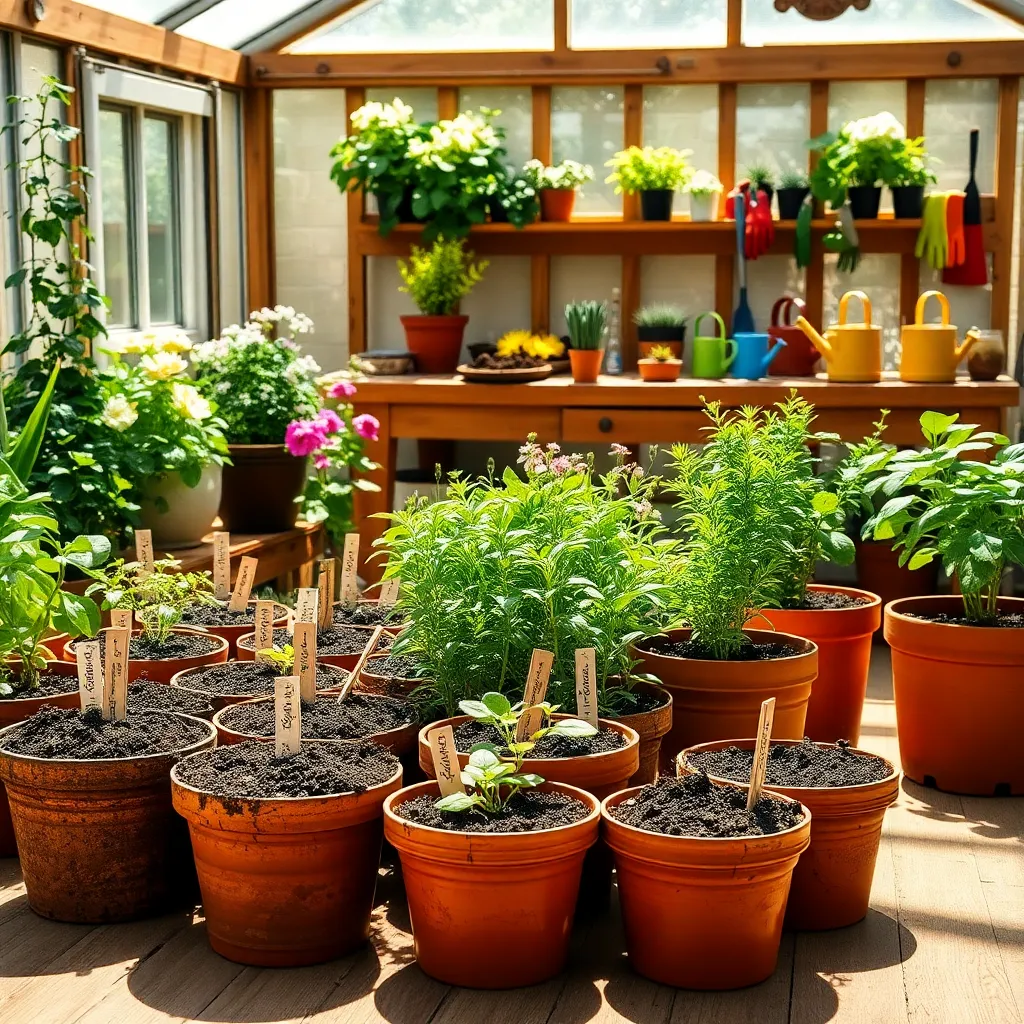
In a backyard greenhouse, the right soil mix can significantly impact plant health and productivity. It’s essential to choose a mix that provides the necessary drainage, aeration, and nutrients tailored to the needs of your specific plants.
Begin with a basic soil mix consisting of equal parts garden soil, peat moss, and perlite, which will suit most greenhouse plants. This combination ensures good drainage and moisture retention, preventing root rot while maintaining adequate hydration.
For plants that require specific conditions, such as succulents or cacti, modify the mix by increasing the perlite or adding sand. This adjustment enhances drainage, mimicking the arid environments these plants naturally thrive in.
Consider adding organic matter like compost to enrich the soil with nutrients and improve its texture. Advanced gardeners might experiment with biochar to increase microbial activity and nutrient retention, promoting healthier plant growth over time.
Pest Management Strategies
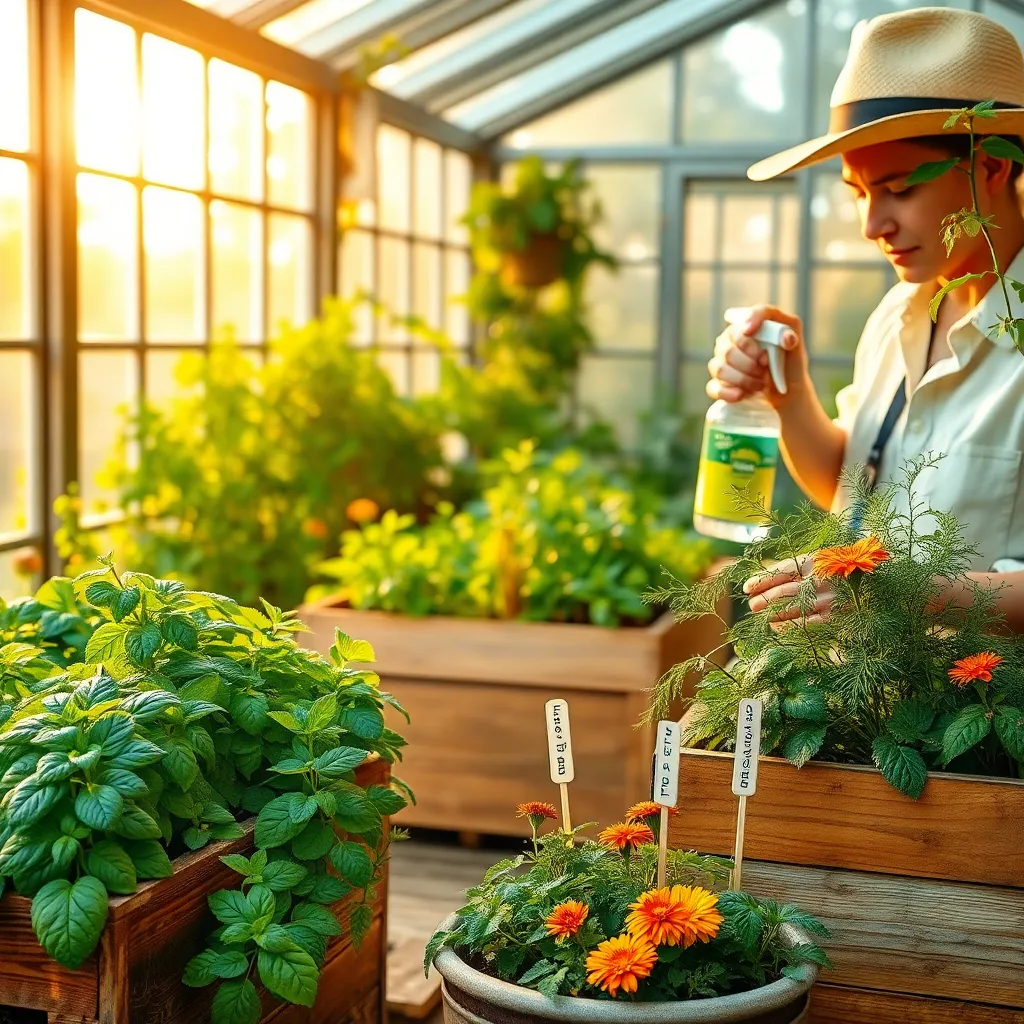
Managing pests effectively is crucial for maintaining a healthy greenhouse environment. Start by regularly inspecting plants for early signs of infestation, such as discolored leaves or sticky residue.
Introduce beneficial insects like ladybugs and predatory mites to naturally control aphid and spider mite populations. These insects help maintain a balanced ecosystem, reducing the need for chemical interventions.
For those battling persistent pests, consider using organic sprays like neem oil or insecticidal soap. Apply these treatments during the cooler parts of the day to prevent plant stress and maximize effectiveness.
Advanced gardeners might employ crop rotation and companion planting to deter pests naturally. For example, planting marigolds can help repel nematodes, while basil can deter thrips and flies when grown alongside tomatoes.
Seasonal Crop Rotation Plans
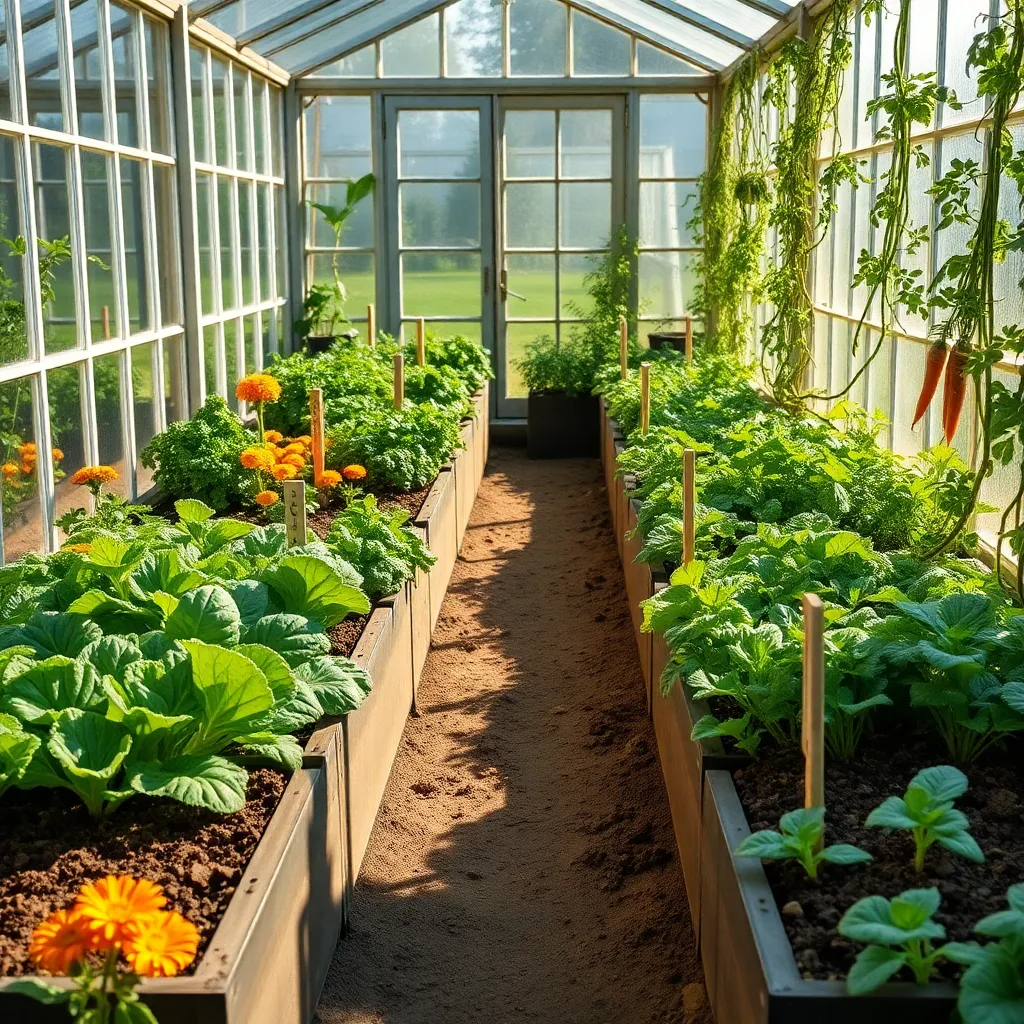
Implementing seasonal crop rotation plans in your backyard greenhouse is a practical way to enhance soil health and prevent pest infestations. By rotating crops, you can reduce the build-up of soil-borne diseases and balance nutrient use, ensuring more robust plant growth.
A basic rotation plan involves changing plant families each season, such as rotating legumes with leafy greens. This method allows legumes to fix nitrogen in the soil, benefiting the following crop of leafy greens that thrive on nitrogen-rich conditions.
For more advanced gardeners, consider using a four-year rotation cycle involving legumes, leafy greens, root vegetables, and fruiting crops. This cycle maximizes soil nutrient balance and reduces the chances of nutrient depletion or pest build-up.
Prepare the soil by incorporating organic matter, such as compost, which improves soil structure and fertility. Watering each section according to the needs of the current crop is crucial; for instance, leafy greens often require more consistent moisture than root vegetables.
To enhance the effectiveness of your crop rotation plan, introduce cover crops like clover or vetch during the greenhouse’s off-season. These cover crops not only add organic matter to the soil but also suppress weeds and improve soil aeration.
DIY Shelving and Storage Ideas

Creating DIY shelving and storage in your greenhouse allows for better organization and maximizes available space. Start by assessing the specific needs of your greenhouse, focusing on what plants or tools require storage and accessibility.
Consider using recycled materials, such as old wooden pallets or crates, to build sturdy and eco-friendly shelves. These can be easily customized to fit any space, offering a sustainable solution that reduces waste while being cost-effective.
Install adjustable shelves to accommodate plants of different heights and growth stages. This flexibility ensures that you can optimize light exposure and air circulation, both of which are crucial for healthy plant development.
For more advanced gardeners, incorporating vertical storage solutions and hanging racks can provide additional space-saving options. These additions, paired with hooks or baskets, can help organize tools and smaller gardening supplies efficiently.
Composting Within Your Greenhouse
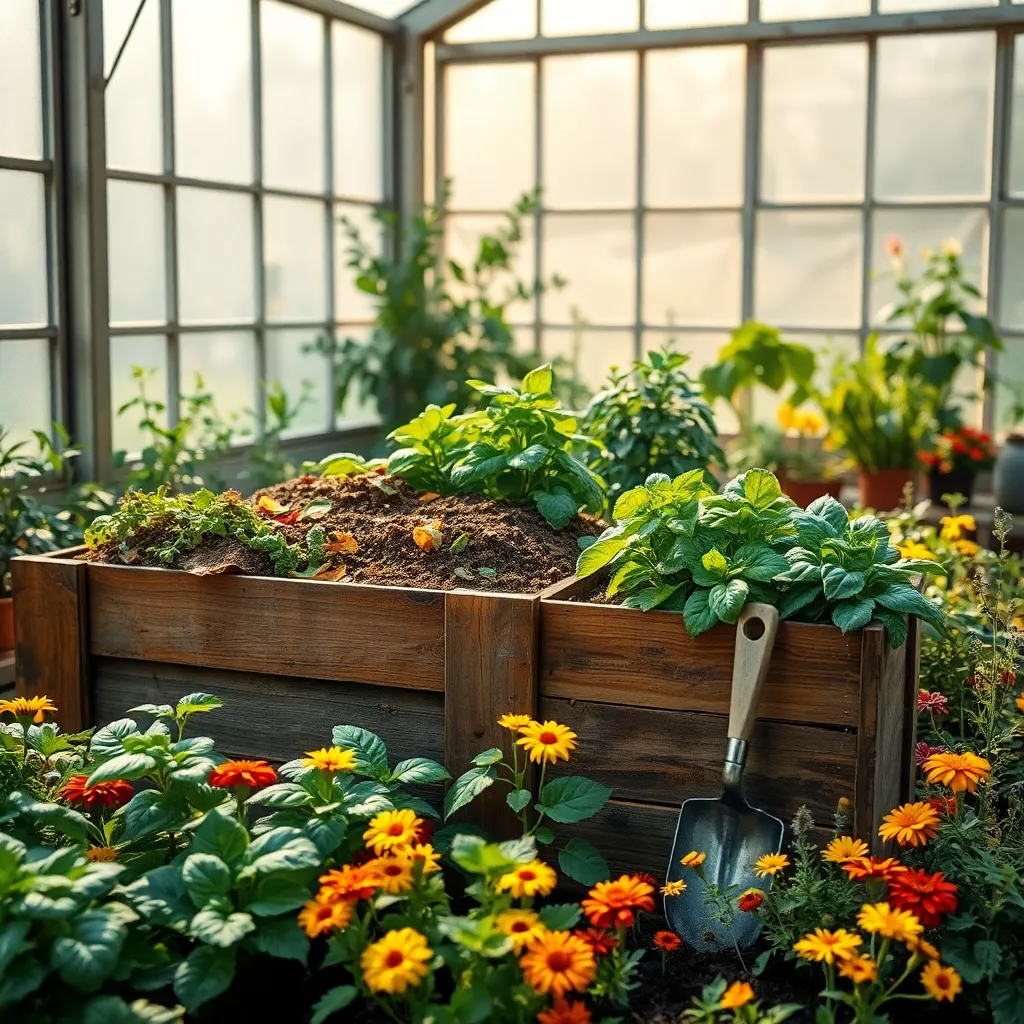
Creating a composting system within your greenhouse can significantly enhance plant growth and soil health. By converting kitchen scraps and garden waste into nutrient-rich compost, you’ll provide your plants with a natural fertilizer.
Begin by setting up a small compost bin or pile in a corner of the greenhouse where it won’t disrupt plant activities. Choose a spot with good airflow to prevent unpleasant odors and to speed up the decomposition process.
To maintain your compost, regularly add a balanced mix of green materials like vegetable scraps and brown materials such as dried leaves or shredded paper. Turn the pile every couple of weeks to aerate it and promote even decomposition, which will help in producing high-quality compost faster.
For beginners, it’s important to monitor the moisture levels of your compost, ensuring it remains as damp as a wrung-out sponge. Advanced gardeners might consider adding worms to their compost heap, as vermicomposting can accelerate the breakdown of organic material and enrich the compost further.
Once your compost is ready, typically in a few months, mix it into the top few inches of your greenhouse soil to improve its structure and nutrient content. This practice not only boosts plant health but also reduces the need for chemical fertilizers, making your greenhouse more sustainable.
Hydroponic Systems for Beginners
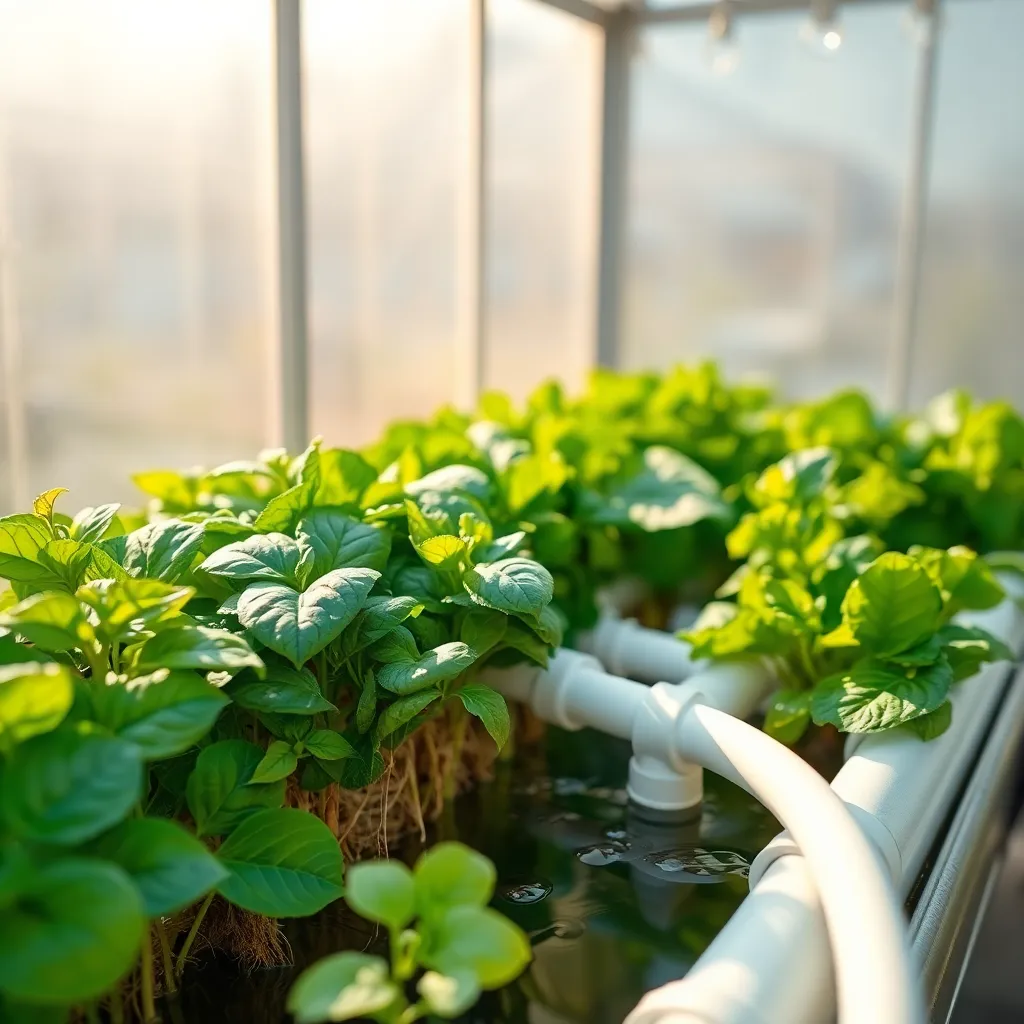
Hydroponic systems offer a soil-free way to grow plants, making them an excellent project for greenhouse enthusiasts looking to optimize space. For beginners, starting with a simple nutrient film technique (NFT) system or deep water culture (DWC) is advisable, as these are easier to manage and set up.
To start, ensure you have a reliable water source and a balanced nutrient solution specifically designed for hydroponics. Regularly monitor pH levels—ideally between 5.5 and 6.5—to maintain an optimal growing environment for your plants.
Lighting is crucial in hydroponic systems, especially in a greenhouse setting where natural light might fluctuate. Consider using full-spectrum LED lights to supplement sunlight and provide consistent light exposure for your plants.
For those ready to explore more, try incorporating an aeration system to improve oxygen availability in the nutrient solution. Prevent algae buildup by covering any exposed nutrient solution surfaces and maintaining clean equipment.
Sustainable Energy Solutions
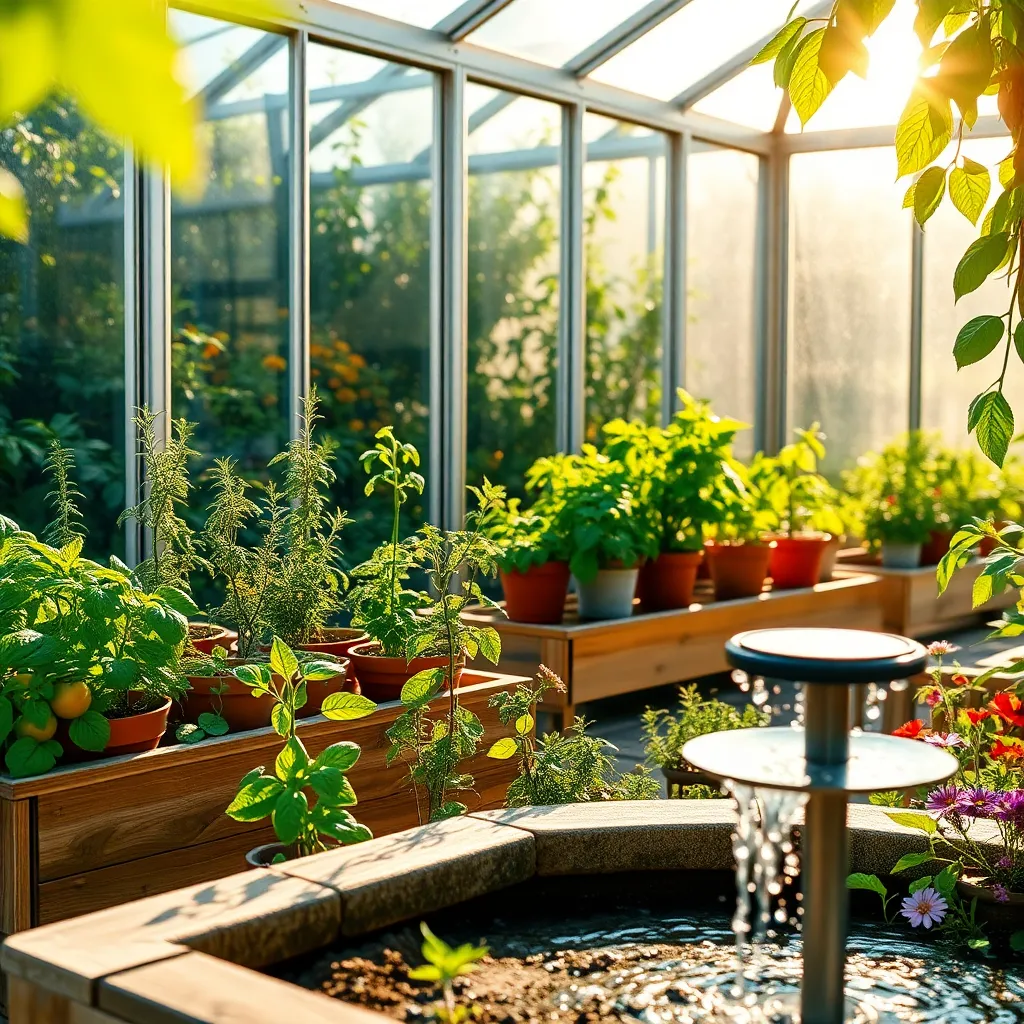
Incorporating sustainable energy solutions into your backyard greenhouse can greatly enhance its efficiency and reduce overall energy costs. A simple and effective way to start is by installing solar panels to power ventilation fans and supplemental lighting.
Solar panels are an ideal choice for greenhouses as they harness energy from the sun, which is ample in a greenhouse environment. For optimal results, place panels on a south-facing roof or wall, ensuring they receive maximum sunlight exposure throughout the day.
Another sustainable energy option is using geothermal heating, which can maintain a stable temperature in your greenhouse year-round. This system utilizes the earth’s natural heat, providing a consistent and eco-friendly source of warmth for your plants.
Additionally, rainwater harvesting systems can be integrated to supply water, reducing reliance on municipal sources. Position rain barrels under gutter downspouts to collect rainwater, which can then be used to irrigate plants, saving both water and money.
Conclusion: Growing Success with These Plants
As we’ve explored in ’12 Essential Backyard Greenhouse Projects,’ nurturing relationships requires the same care and attention as tending to a thriving garden. We’ve covered key concepts: creating a foundation of trust, fostering open communication, nurturing shared goals, encouraging personal growth, cultivating empathy, embracing vulnerability, prioritizing quality time, respecting boundaries, celebrating successes, learning from challenges, maintaining a sense of humor, and continuously investing in the relationship. Each concept is a vital component in building a resilient and flourishing connection.
Now, it’s time to take action. Choose one of these concepts today and implement it in your relationship. Perhaps start with an open conversation or plan a shared activity that strengthens your bond.
Remember, relationships, like gardens, flourish with consistent care and attention. Bookmark this article as your go-to guide for ongoing relationship growth and success. A thriving relationship is a journey, not a destination, and with these insights, you’re well-equipped to cultivate lasting happiness and connection. Save this page, keep it close, and revisit these concepts whenever you need a gentle reminder that relationships, with a little effort, can truly blossom.

